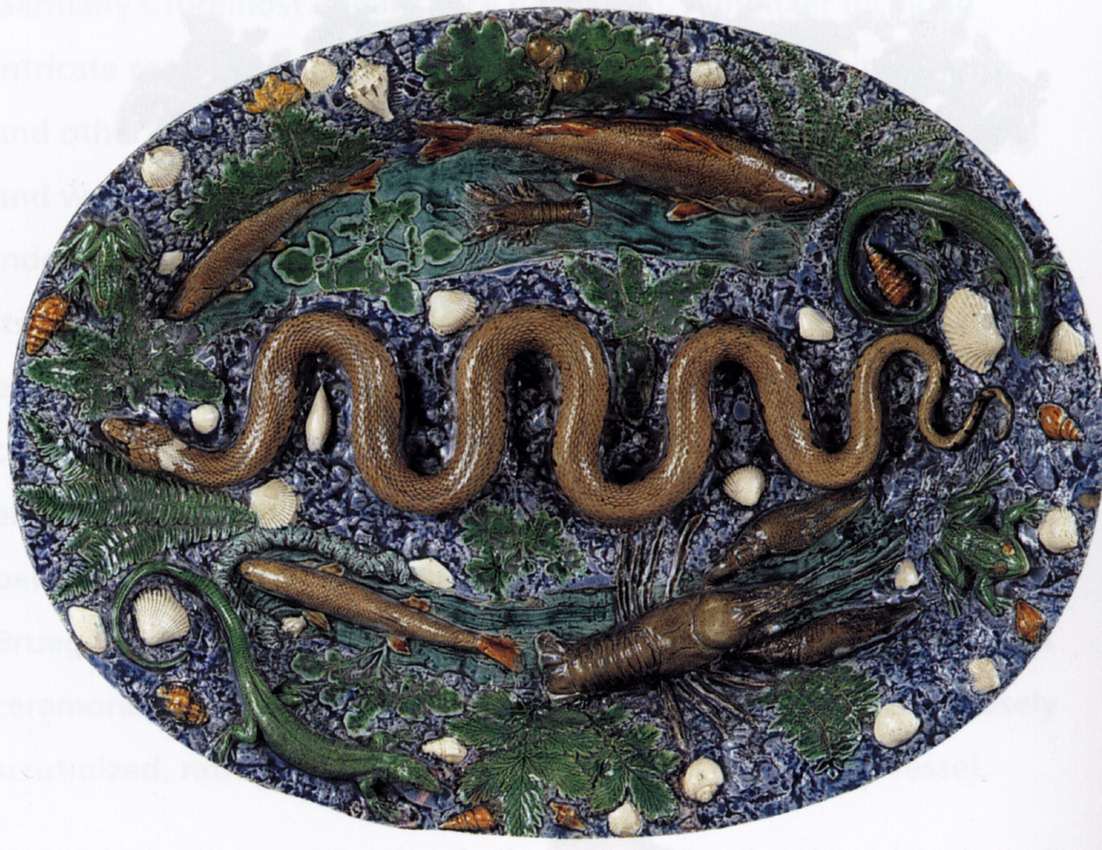French glass painter and potter. He probably grew up in Gascony. He settled in Saintes in 1539 or 1540, after a decade of travelling all over France and neighbouring regions working as a peintre-vitrier (one who paints, assembles and installs stained-glass windows) and probably also as a surveyor. During the first decade of his time in Saintes he worked as a surveyor, glass painter and possibly as a portrait painter. In connection with the tax for the salt industry, he received a prestigious royal commission to survey and map the salt marshes of the Saintonge between May 1543 and May or June 1544. His real interest, however, was concentrated on the search for the means of making a white tin glaze such as one embellishing a cup that he had admired during his travels. This change in the direction of his artistic interests occurred when he first settled in Saintes, possibly in the house of Antoine de Pons, the King's Lieutenant in the Saintonge, and Palissy's lifelong friend and patron.
Palissy's experiments were so practical and wide-ranging that by the time he had developed a viable formula for tin glaze and the proper kiln and kiln equipment to make white glazed pottery, he had also worked out formulae for other glaze colours and, by mingling them, had produced his terres jaspées, ceramic wares with a glaze resembling the jasper, chalcedony and coloured, mottled stone then being introduced into architecture, furniture and goldsmiths' work. A 'vase de phorphire' listed on an inventory in 1556 among the enamelled earthenwares in the Paris hôtel of the Constable of France, Anne, Duc de Montmorency, was no doubt one of Palissy's terres jaspées.
In 1565, Catherine de Medicis and her young son, King Charles IX, probably visited Palissy in his workshop during a nearly two-year tour of France. It was then that Catherine is presumed to have commissioned Palissy to design and construct a large garden grotto for her Palace of the Tuileries, which would be built in Paris near the Louvre, on the grounds of a tile works (tuileries) purchased by François I in 1518. Palissy moved his family to Paris in 1565 and established a workshop there, but was unable to complete the grotto installation because the palace project was abandoned in 1572.
After religious civil wars between Catholics and Protestants culminated in the Saint Bartholomew's Day Massacre in 1572, Palissy, fearing for his life, left one of his sons, Mathurin, to manage the Parisian workshop and moved the rest of his family to Sedan, where he established a second atelier. There Palissy continued to receive orders for ceramics and devoted much time to exploring and refining his views on natural history. Around 1576 or 1577 Palissy returned to Paris to live.
In 1585 king Henri III made the practice of Protestantism punishable by death and imprisoned those who had previously followed that faith. In 1588 Palissy was incarcerated in the Bastille. In 1590 he died there of malnourishment and vermin-borne disease.
//
![]()




